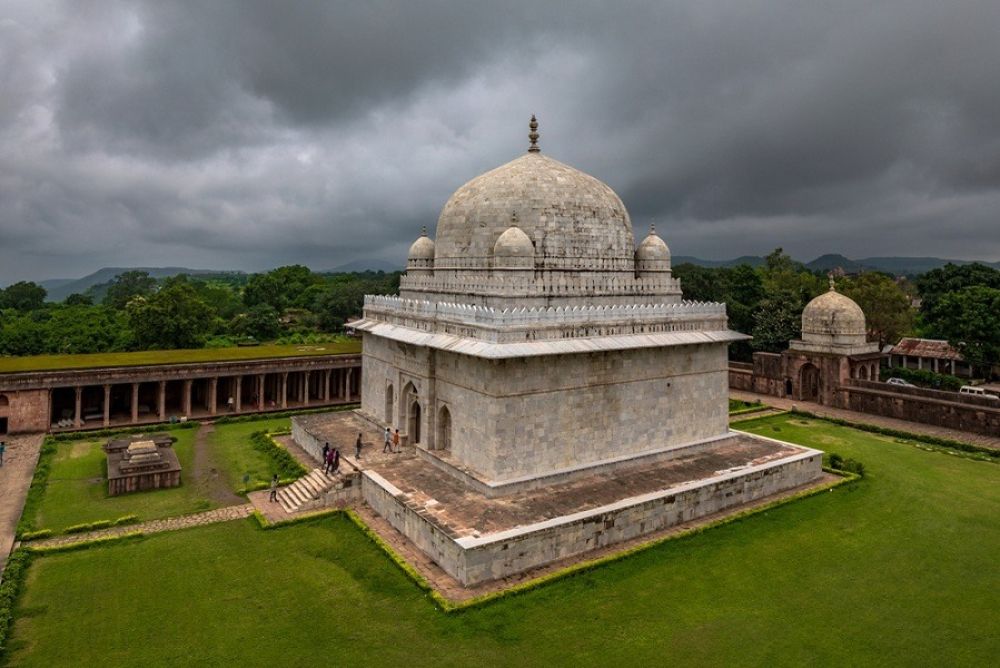

The town of Mandu, perched atop the Vindhya Range in Madhya Pradesh, is home to the exquisite marble mausoleum known as Hoshang Shah's Tomb. Hoshang Shah, the second ruler of the Malwa kingdom, reigned from 1405 to 1435 and was the first king to be buried in Mandu. His tomb holds the distinction of being India's first marble edifice and possibly served as a template for the construction of the magnificent Taj Mahal, as it's said that the Mughal emperor Shah Jahan sent architects to study its design before they started work on his iconic monument.
The architecture of Hoshang Shah's Tomb is a remarkable blend of Afghan and Indian styles. It is adorned with intricate lattice work, imposing towers, and a distinctive dome, which are characteristic of early Indo-Islamic architecture. The tomb sits within an enclosed garden, illustrating the Mughal garden layout that would come to be paramount in later architectural works. This place is not only an architectural marvel but also a representation of the rich cultural amalgamation that took place in India during the medieval period.
Tourism in Mandu, and at Hoshang Shah's Tomb specifically, has been growing since the latter part of the 20th century. Recognizing the historical and architectural significance of this tomb, the Indian government and several cultural organizations have made efforts to preserve the site and promote it as a tourist destination. Over the years, the tranquil ambiance and well-preserved edifices of Mandu have attracted history enthusiasts, architectural aficionados, and casual tourists alike.
Visitors to Hoshang Shah's Tomb can explore the mausoleum throughout the year. However, the monsoon season, spanning from July to September, provides a lush, green backdrop that enhances the beauty of the ancient structures, making it an ideal time for photography. The pleasant weather post-monsoon also makes for a comfortable experience.
In recent years, there has been a noticeable trend towards thematic tourism, and Mandu is no exception. Tourism trends highlight the growing interest in heritage walks, guided tours that delve deeply into the historical context of the tomb and Mandu's other structures, and local cultural experiences that include folk performances and traditional cuisine.
Mandu is well connected by road, and the nearest major city is Indore, approximately 100 kilometers away. Visitors can reach Indore by air or train and then take a bus or hire a taxi to Mandu. Once in Mandu, Hoshang Shah’s Tomb is easily accessible as it is one of the key landmarks of the town.
UNESCO has recognized Mandu as a World Heritage Site, leading to enhanced conservation efforts. Both the Archaeological Survey of India (ASI) and local bodies have undertaken important work to maintain the structures and manage the environmental impact of tourism.
Hoshang Shah's Tomb stands as a testament to India's rich history and architectural heritage. As a symbol of Mandu's glorified past, it continues to be a focal point for tourists seeking to immerse themselves in the splendors of bygone eras. Preservation and sustainable tourism practices remain vital to ensuring that the tomb can be enjoyed by generations to come.